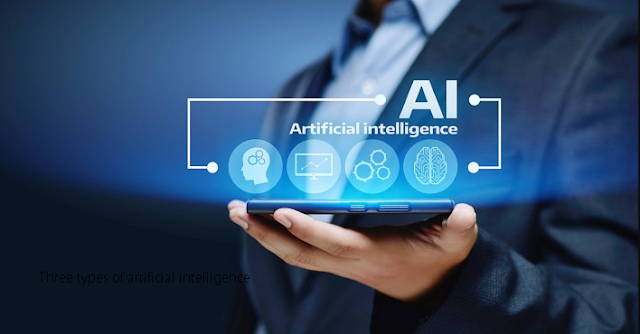The three types of artificial intelligence: Understanding AI
Tech Kiwari | The AI is developing fast. Artificial super intelligence could be here sooner than expected.
According to a Gartner survey of over 3,000 CIOs , artificial intelligence AI was by far the most mentioned technology, taking the spot as a top game-changing technology with data and analytics now occupying a second spot.
AI will be at the core of everything humans will interact with for years to come and beyond.
Robots are programmable entities designed to perform a variety of tasks. When programmers embed human intelligence, behavior, emotions, and even engineering ethics into robots, we say they're creating robots with an embedded artificial intelligence that can mimic any task a human can perform, including debates, IBM pointed out earlier this year the CES Las Vegas.
IBM has made a human-AI debate possible through its project debaters intended to help decision makers make more informed decisions.
Depending on the type of tasks performed by AI robots, AI has been divided into different categories. However, it should be noted that the AI is still in its infancy. In the future, AI will look and behave very differently from what it is today.
To be prepared for the future, we need to refresh our knowledge of AI. Humans must also be prepared for the challenges and changes that AI brings to society and humanity at large. So what actually is artificial intelligence?
Artificial narrow intelligence ANI
Artificial Narrow Intelligence ANI, also known as narrow AI or weak AI, is a type of artificial intelligence. focused on a single narrow task. It possesses a narrow range of abilities. This is the only AI that currently exists.
Narrow AI is what most of us interact with on a daily basis. Think of Google Assistant, Google Translate, Siri, Cortana or Alexa. It is machine intelligence using Natural Language Processing NLP.
NLP is used in chatbots and other similar applications. By understanding speech and text in natural language, they are programmed to interact with people in personalized, natural ways.
AI systems are now used in medicine to diagnose cancer and other diseases with extreme accuracy by replicating human cognition and thinking.
Artificial General Intelligence AGI
When we talk about artificial general intelligence AGI we are referring to a type of AI, i.e. about as capable as a human.
However, AGI is still an emerging field. Since the human brain is the model for the creation of general intelligence, it seems to be different relatively soon due to the lack of a comprehensive knowledge of the functionality of the human brain.
However, as history has shown many times, people tend to develop technologies that become dangerous to human existence. Why would trying to create algorithms to replicate brain function be any different? When this happens, people need to accept the consequences it might bring.
Artificial Super Intelligence ASI
Artificial Super Intelligence Artificial Super Intelligence, ASI is a way forward. Or we believe in it. To reach that point and be called ASI, an AI must outperform humans at absolutely everything. The ASI type is achieved when AI is more capable than a human.
This type of AI will be able to perform exceptionally well at things like art, decision making, and emotional relationships. These things are now part of what separates a machine from a human. In other words, things that are supposed to be strictly human.
However, many might argue that humans have not yet mastered the art of emotional connection or good decision-making. Does this mean that a few centuries from now, artificial superintelligence may master areas where humans have failed?
Roboethics: Human ethics in robotics
At the same time that we start talking and learning more, we need to start the discussion. roboethics . How will humans interact with, consider and treat these machines in the future? When will people do this? Grant rights to AI? Who will have the authority to grant such rights?
2001 , Steven Spielberg in collaboration with Kubrick Studios brought to theaters an argument about the core of human existence, represented by a humanoid mecha named David. He is the first of his kind: a child who can be activated to feel love, learn from his surroundings, and consequently develop other human emotions like fear and sadness.
Humans have embedded David in the ability to feel emotions. Mankind failed in taking responsibility for the life they created. David's mother abandons him in the woods, hurting David's feelings.
Meanwhile, in the real world, Sophia from Hanson Robotics was the first robot to be granted citizenship by the Saudi Arabian government. Although Sophia is considered to be one of the most advanced robots today, she is still a prototype, but it is set to become an artificial general intelligence in the future. In the video below, Sophia has a conversation with one of her creators.
Robots embedded in AI and future applications of the technology represent ethical issues that need to be addressed now, as many futurists, philosophers, and AI researchers around the world have already suggested.
This is the time to start discussing Transhumanism and the AGI or Singularity is expected to emerge by 2060 to prepare for the future.
You may be wondering what kind of world this will be like when a computer's cognitive abilities are superior to a human's.

Post a Comment